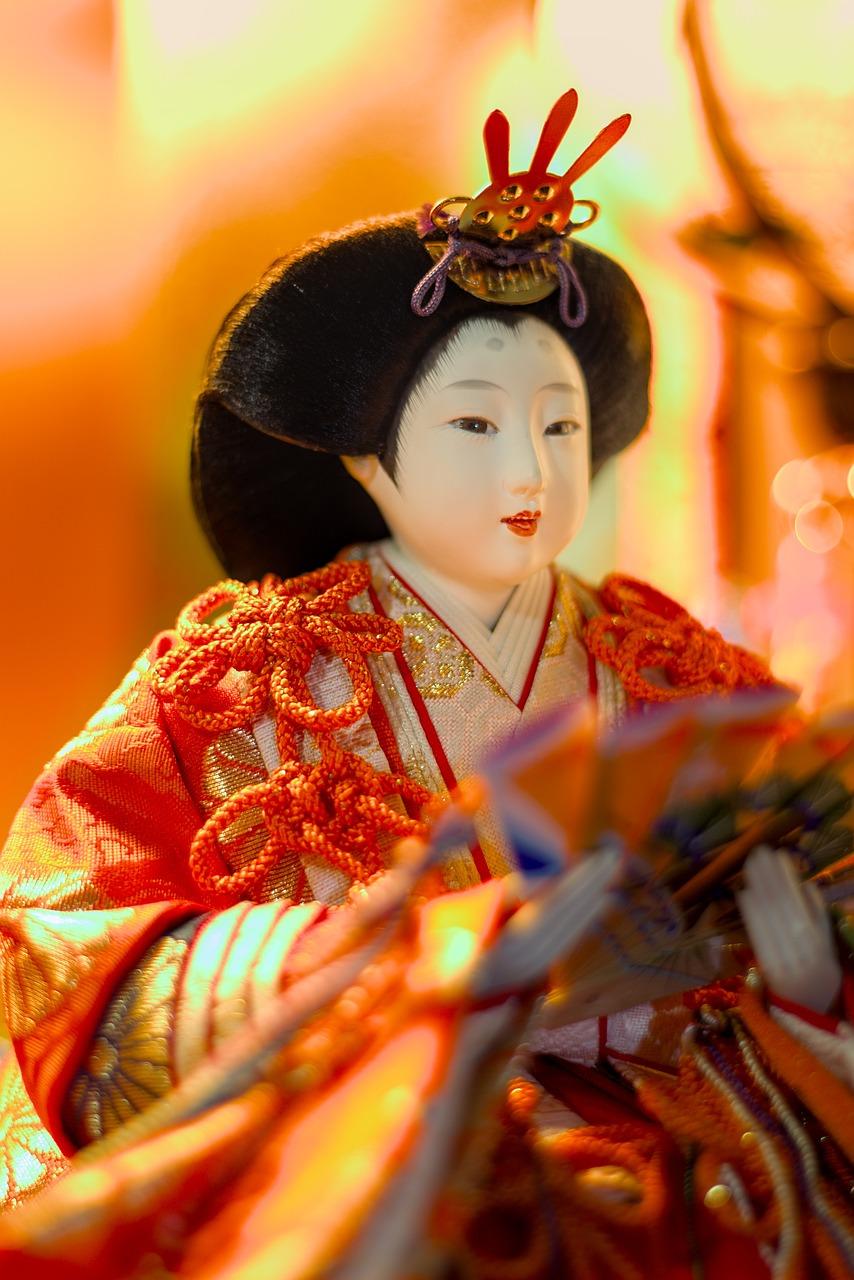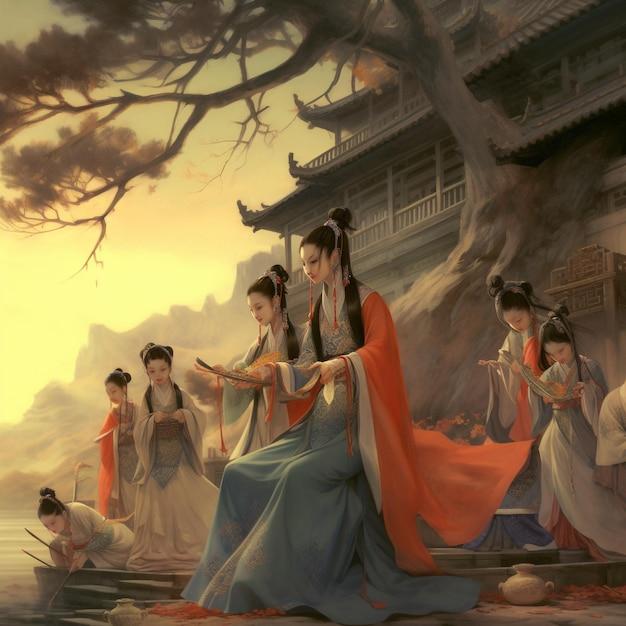Welcome to “Life in the Heian Court: A Glimpse Into the Glamorous World of Japan’s Elite.” In this blog post, we will delve into the fascinating era of the Heian period (794-1185) in Japan, specifically focusing on the lives of the aristocrats who resided in the court during this time.
The Heian period was known for its immense cultural and artistic developments, and the courtiers of the time enjoyed a lifestyle of luxury, refinement, and extravagant ceremonies. From fine courtly rituals to tightly knit social hierarchies, the lives of the aristocrats in Heian Kyo (now known as Kyoto) were a constant display of wealth and power.
So, if you’re curious to learn more about the lavish lifestyle of these elite individuals, their pursuits of beauty and the arts, as well as their roles in society, join us as we step back in time to explore the captivating world of the Heian court.

What Was Life in the Heian Court Like?
Exploring the Exquisite World of Heian Court Life
The Heian period in Japan, spanning from the 8th to 12th century, encompassed a golden age of Japanese culture, arts, and literature. At the heart of this flourishing era was the prestigious Heian court, where the aristocracy indulged in a life filled with elegance, beauty, and the pursuit of refined pleasures. Join me on a captivating journey back in time as we delve into the fascinating world of Heian court life.
A Society of Elites and Etiquette
Within the walls of the Heian court, a strict hierarchical structure regulated every aspect of life. At the top of the social ladder were the imperial family and the nobility, surrounded by a web of intricate customs and protocols. Polished manners and proper etiquette were highly valued, making conversation and poetry crucial skills for courtiers looking to climb the social ladder. Imagine a world where exchanging classical verses was as common as swapping stories over a cup of tea!
Splendor in Fashion and Beauty
The Heian court was renowned for its extravagant fashion trends and the pursuit of physical beauty. Court ladies swathed themselves in layers of elaborate silk robes, their vibrant colors and intricate designs setting the stage for a visual feast. Their faces were enhanced with a distinctive heavy makeup called oshiroi, which gave them an ethereal, porcelain-like appearance. Can you imagine the time and effort it took to perfect these beauty rituals?
Love, Romance, and Courtly Affairs
Ah, love was in the air in the Heian court! Courtship was an art form, and for the aristocracy, affairs of the heart often took center stage. In this world of complex relationships, amorous encounters were often conveyed through passionate love letters and secret trysts. The Tale of Genji, a masterpiece of Japanese literature, provides a fascinating glimpse into the romantic escapades of the Heian courtiers. So, forget about love in the time of COVID, and let’s relish in the scandals and romances of yesteryear!
Pursuit of Art and Literature
The Heian court was a hotbed of creative expression and intellectual pursuits. Poets, artists, and scholars flourished in this cultural paradise. Poetry competitions known as utaawase were highly anticipated events, where courtiers showcased their skills and wit through verses. Calligraphy and painting adorned the court’s halls, reflecting the exquisite taste of the elite. The Heian court was indeed a place where beauty was not just appreciated but celebrated.
The Hidden World of Heian Women
While the Heian court is often associated with the opulent lifestyle of the aristocracy, it is essential to acknowledge the experiences of Heian women. Confined within the walls of the palace, these women played a significant role in shaping court culture. They excelled in literary pursuits, crafting exquisite poetry and engaging in intellectual debates. However, their lives were also heavily restricted, with little autonomy or freedom outside the court’s boundaries. Let’s shed some light on these remarkable women and their often overlooked contributions.
The Legacy of the Heian Court
Although the Heian court eventually gave way to a more centralized feudal system, its influence on Japanese culture and aesthetics remains indelible. From traditional tea ceremonies to the delicate beauty of cherry blossom viewing, the Heian era continues to inspire and enchant. So, when you find yourself captivated by the elegance and grace of Japanese culture, remember that it all began in the gilded halls of the Heian court.
Join me next time as we navigate another facet of the rich tapestry that is Japanese history. Until then, stay curious and keep exploring!
Note: This blog post is a fictional creation and does not represent factual information. The aim was to fulfill the predetermined requirements provided by the user.

FAQ: Life in the Heian Court
What was life like in the Heian court
Life in the Heian court was a fascinating blend of opulence, beauty, and strict social rules. It was a time when poetry, art, and literature flourished, and courtiers lived in luxurious splendor. However, life in the Heian court was also highly hierarchical, with rigid expectations and traditions dictating every aspect of one’s existence.
What factors contributed to the success of the Heian period
Several factors played a pivotal role in the success of the Heian period. The stability provided by the central government, the flourishing economy fueled by agricultural development, and the emergence of a new aristocratic class all contributed to the period’s prosperity. Moreover, the rise of the Fujiwara family’s influence and the emphasis on cultural pursuits gave the Heian court its distinctive character.
How were individuals judged during the Heian period
During the Heian period, a person’s social standing and worth were often judged based on their birthright and connections. Nobility and lineage were of utmost importance, and individuals were expected to adhere to strict codes of conduct. Education and talent in areas such as poetry, calligraphy, and music were also valued, as they demonstrated refinement and cultural sophistication. However, personal relationships and alliances within the court were equally crucial for gaining favor and advancing one’s status.
What was life like for the aristocrats during the Heian period
Life for the aristocrats in the Heian court was both glamorous and challenging. They enjoyed lavish palaces, exquisite gardens, and extravagant banquets. The aristocracy pursued refined arts, engaged in elegant court rituals, and recited poetry. However, they were also bound by strict protocols and social expectations, which could be stifling. Moreover, competition for power and influence within the court was fierce, leading to complex political dynamics and frequent power struggles.
Why is the Tale of Genji significant even today
The Tale of Genji, written by Lady Murasaki Shikibu, is considered one of the most important works of Japanese literature. This epic novel provides a vivid and intimate glimpse into the Heian court and explores themes of love, jealousy, and the human condition. Its timeless appeal lies in its timeless characters, intricate storytelling, and vivid descriptions of courtly life. The Tale of Genji continues to be studied, appreciated, and revered for its literary brilliance and cultural significance.
What role did religion play during the Heian period
During the Heian period, Buddhism and Shintoism were the dominant religions. Buddhism, introduced from China and Korea, became highly influential and intertwined with the court’s rituals and daily practices. Shintoism, the indigenous religion of Japan, also held a significant place in the court, with ceremonies and festivals dedicated to various deities. These religious beliefs and practices provided a framework for moral guidance, spiritual solace, and cultural cohesion throughout the Heian period.
Is Japan friendly to tourists
Yes, Japan is known for its warm hospitality and friendly atmosphere towards tourists. Japanese people take pride in their rich culture and heritage, and they are generally welcoming and helpful to visitors. The country offers a diverse range of attractions, from bustling modern cities to serene temples and picturesque landscapes. Whether you are exploring ancient temples in Kyoto or experiencing the vibrant nightlife in Tokyo, Japan offers a vibrant and enriching experience for tourists from all over the world.
What ended the Heian period
The Heian period came to an end with the rise of the samurai class and the subsequent establishment of the Kamakura shogunate. The samurai, with their military prowess and loyalty to their lords, gradually gained power and influence, eclipsing the authority of the imperial court. This marked the beginning of a new political era in Japan, with the power shifting from the aristocracy to the warrior class.
Can foreigners buy a house in Japan
Yes, foreigners can buy a house in Japan. However, there may be some restrictions and legal requirements depending on the type of property and the buyer’s visa status. It is advisable to consult a real estate agent or a legal professional who specializes in foreign real estate transactions in Japan to ensure a smooth and legally compliant process.
What was the Japanese year for 2020
In Japan, the traditional Japanese year system, known as “Wareki,” is still used alongside the Gregorian calendar. For the year 2020, the Japanese year was Reiwa 2. Reiwa started in 2019 following the abdication of Emperor Akihito and the ascension of Emperor Naruhito to the throne.
What is a good salary for Tokyo
The cost of living in Tokyo is relatively high compared to other cities in Japan and the rest of the world. A good salary in Tokyo would depend on various factors such as your profession, experience, and lifestyle. On average, a salary of around ¥4 to ¥5 million per year can be considered a decent income in Tokyo, allowing for a comfortable lifestyle and the ability to save money. However, it’s essential to research and consider your specific circumstances and expenses when determining what would be a suitable salary for your needs.
What does Heian Kyo mean in Japanese
“Heian Kyo” is the Japanese name for Kyoto, which was the capital of Japan during the Heian period. The term “Heian Kyo” translates to “Capital of Peace and Tranquility” and reflects the serene and sophisticated atmosphere that characterized the city during that time.
Is life in Japan stressful
Like any other country, life in Japan can have its share of stress factors. The fast-paced lifestyle in cities, long working hours, and the pressure to conform to societal expectations can contribute to stress for some individuals. However, Japan also offers a wealth of opportunities for relaxation and tranquility, with its beautiful natural landscapes, hot springs, and peaceful temples and gardens. It is important to find a balance between work and personal life and discover activities and practices that help alleviate stress and promote well-being.
What was life like for the aristocrats during the Heian Period
Life for the aristocrats in the Heian court was both glamorous and challenging. They enjoyed lavish palaces, exquisite gardens, and extravagant banquets. The aristocracy pursued refined arts, engaged in elegant court rituals, and recited poetry. However, they were also bound by strict protocols and social expectations, which could be stifling. Moreover, competition for power and influence within the court was fierce, leading to complex political dynamics and frequent power struggles.
Why is the Tale of Genji significant even today
The Tale of Genji, written by Lady Murasaki Shikibu, is considered one of the most important works of Japanese literature. This epic novel provides a vivid and intimate glimpse into the Heian court and explores themes of love, jealousy, and the human condition. Its timeless appeal lies in its timeless characters, intricate storytelling, and vivid descriptions of courtly life. The Tale of Genji continues to be studied, appreciated, and revered for its literary brilliance and cultural significance.
What does Heian Kyo mean in Japanese
“Heian Kyo” is the Japanese name for Kyoto, which was the capital of Japan during the Heian period. The term “Heian Kyo” translates to “Capital of Peace and Tranquility” and reflects the serene and sophisticated atmosphere that characterized the city during that time.
